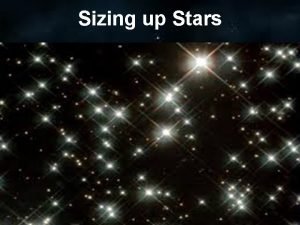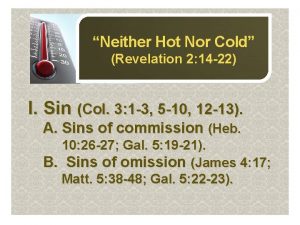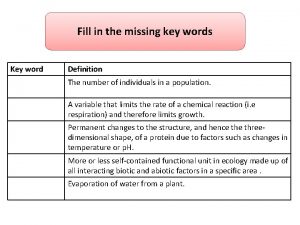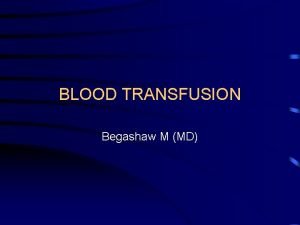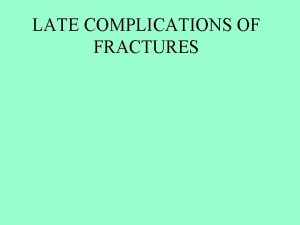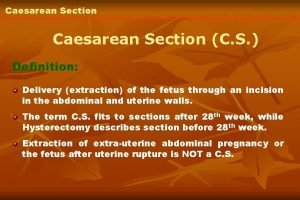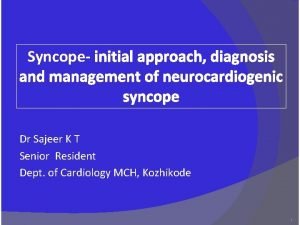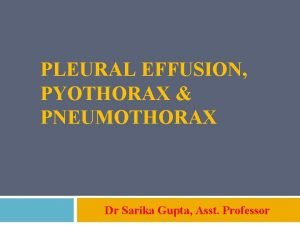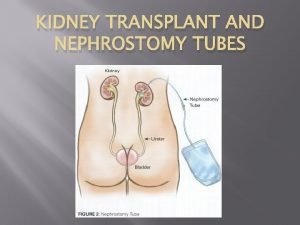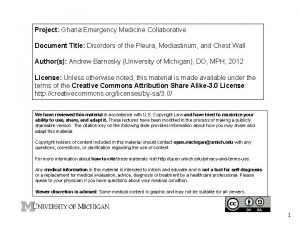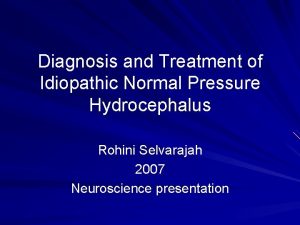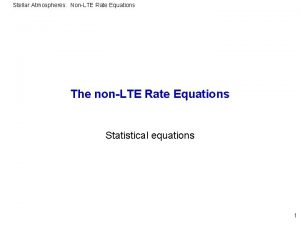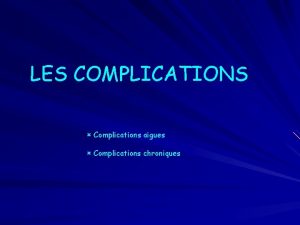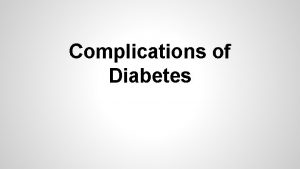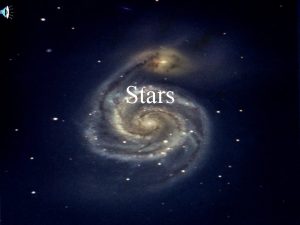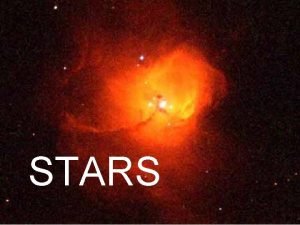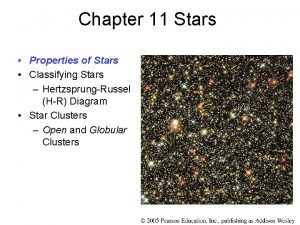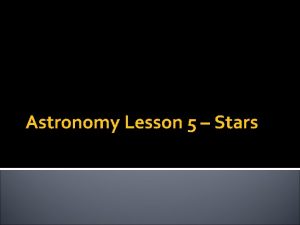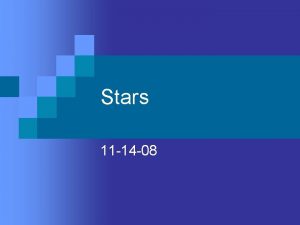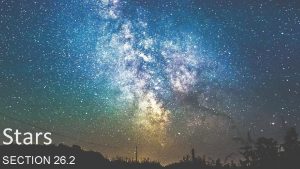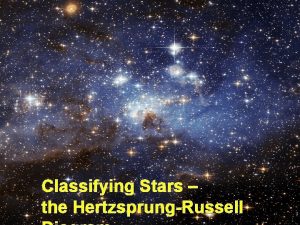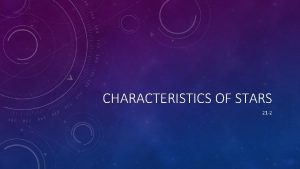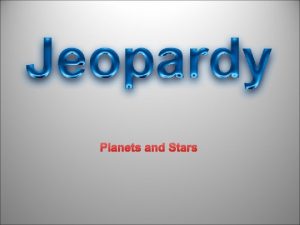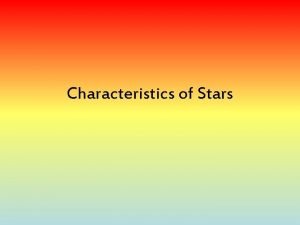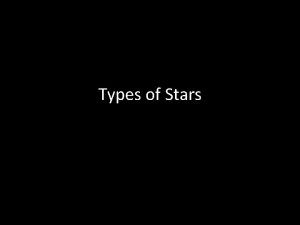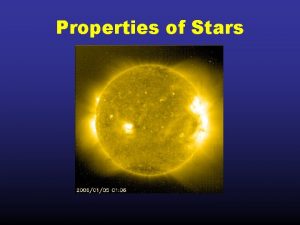NonLTE Models for Hot Stars Added Complications Complete




















- Slides: 20

Non-LTE Models for Hot Stars Added Complications Complete Linearization Line Blanketed, Non-LTE Models 1

2

Massive Hot Stars www. ster. kuleuven. ac. be/~coralie/ghost 3_bouret. pdf 3

Interesting Complications 10% of OB stars 4

Complete Linearization (CL) (Auer & Mihalas 1969) • Linearized versions of - transfer equation - radiative equlilibrium - hydrostatic equilibrium - conservation of particle number - statistical equilibrium • Use matrix operations in a Newton – Raphson correction scheme (iterative) • Used for H + He models (Mihalas + …) 5

Complete Linearization (Auer & Mihalas 1969) • Always works but expensive in computer time …varies as (NF+NL+NC)3 x ND x Niter • NF = # frequency points (~106) • NL = # atomic energy levels • NC = # constraint equations (~3) • ND = # depth points • Niter = # iterations to convergence 6

Model Atmospheres for Hot Stars 7

TLUSTY/SYNSPEC • OSTAR 2002: Lanz & Hubeny 2003, Ap. JS, 146, 417 • BSTAR 2006: Lanz & Hubeny 2007, Ap. JS, 169, 83 • Web site: http: //nova. astro. umd. edu/ • TLUSTY – atmosphere SYNSPEC – detailed spectrum • Versions available for accretion disks 8

Line Blanketed Non-LTE Models for Hot Stars by Hubeny & Lanz (1995, Ap. J, 439, 875) • Uses hybrid CL + ALI scheme (Accelerated Lambda Iteration: solve for J = Λ[S] using approximate Λ-operator plus a correction term from prior iteration) • Divide frequency points into groups of crucial – full CL treatment and ALI – use fast ALI treatment 9

Non-LTE Opacity Distribution Functions • Group all transitions: parity energy • Make superlevels for each group (~30 per ion) • Assign single NLTE departure coefficient to each superlevel 10

Non-LTE Opacity Distribution Functions • For each pair of superlevel transitions, get total line opacity in set frequency intervals • Represent in model as an ODF • Alternatively use Opacity Sampling (Monte Carlo sampling of superline cross sections) 11

Line Blanketing: OSTAR 2002 • Low tau: top curves are for an H-He model, and the temperature is progressively lower when increasing the metallicity • Large tau: reverse is true at deeper layers 12

NLTE populations: OSTAR 2002 • He (left), C (right) ionization vs. tau for Teff = 30, 40, 50 k. K (top to bottom) • LTE = dashed lines • NLTE: numbers tend to be lower in lower stages (overionized by the strong radiation field that originates in deep, hot layers) and conversely higher in higher stages 13

OSTAR 2002: Lyman Jump & Teff • Top to bottom: Teff = 55, 50, 45, 40, 35, and 30 k. K • Lyman jump gradually weakens with increasing temperature and disappears at 50 k. K • Weakening and disappearance of Lyα, Si IV 1400, C IV 1550, etc. at hot end 14

OSTAR 2002: Lyman Jump & g • Top to bottom, > 912 Å: log g = 4. 5, 4. 25, 4. 0, 3. 75, 3. 5 • Order reversed for < 912 Å • Saha eqtn. : low ne, low neutral H, less b-f opacity 15

Lyman Jump & metallicity • Z / ZSUN = 2, 1, 1/2, 1/5, 1/10 (bold line) • Strong absorption 1000 – 1600 Å balanced by higher flux < 912 Å in metal rich cases (flux constancy) 16

NLTE (TLUSTY) vs. LTE (ATLAS) • (Teff, log g) = (40 k. K, 4. 5), (35 k. K, 4. 0), (30 k. K, 4. 0) (thick lines), compared to Kurucz models with the same parameters (thin histograms) 17

OSTAR 2002 & BSTAR 2006 • grad/g vs. Teff and log g Thick and dashed line = Eddington limit for solar and zero metallicity • BSTAR 2006 grid (filled) and OSTAR 2002 grid (open) • Evolutionary tracks (Schaller et al. 1992) are shown for initial masses of 120, 85, 60, 40, 25, 20, 15, 12, 9, 7, 5, and 4 MSUN 18 (left to right)

BSTAR 2006 vs. ATLAS • (Teff, log g) = (25 k. K, 3. 0), (20 k. K, 3. 0), (15 k. K, 3. 0) (black lines); compared to Kurucz models, same parameters (red histograms) • In near UV, LTE fluxes are 10% higher than NLTE • Lower NLTE fluxes result from the overpopulation of the H I n = 2 level at the depth of formation of the continuum flux, hence implying a larger Balmer continuum opacity 19

BSTAR 2006 vs. ATLAS • NLTE effects most important for analysis of specific lines (NLTE – black, LTE – red) 20
 There are millions of stars in space
There are millions of stars in space Fashion cycle
Fashion cycle Color of the stars from coolest to hottest
Color of the stars from coolest to hottest Hot nor hot
Hot nor hot White hot vs red hot temperature
White hot vs red hot temperature Hot metal forming
Hot metal forming Perbedaan hot lava dan hot lava volcano
Perbedaan hot lava dan hot lava volcano Modals and semi modals difference
Modals and semi modals difference Bacterial growth
Bacterial growth Simple predicate
Simple predicate Blood transfusion requirements
Blood transfusion requirements Non union types
Non union types C section complications
C section complications Vasovagal reaction
Vasovagal reaction Tactile fremitus in pleural effusion
Tactile fremitus in pleural effusion Duodenal switch complications
Duodenal switch complications Heart failure complications
Heart failure complications Nursing responsibility of colostomy care
Nursing responsibility of colostomy care Neph tubes
Neph tubes Light's criteria
Light's criteria Complications of hydrocephalus
Complications of hydrocephalus


